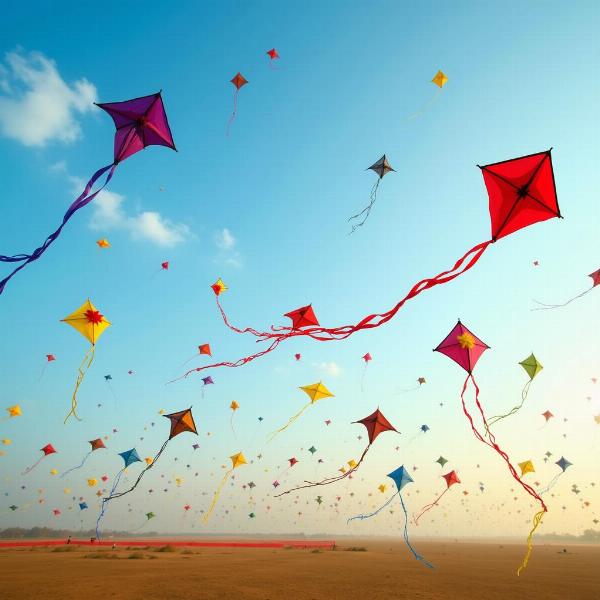Wind, a fundamental element of nature, holds a significant place in Hindi language and culture. Understanding the Hindi word for “windy” goes beyond a simple translation. It involves exploring the various terms used to describe different aspects of wind, from a gentle breeze to a powerful gust, and the cultural connotations associated with them. This exploration will delve into the rich vocabulary of Hindi, revealing the depth and beauty of how wind is perceived and expressed in the Indian context.
Exploring “Windy” in Hindi: Beyond a Single Word
Unlike English, Hindi offers a diverse range of words to describe wind, each with its own shade of meaning and intensity. While a direct translation of “windy” can be achieved with certain terms, truly capturing the essence requires understanding the specific context.
- हवादार (Havaadar): This is perhaps the closest equivalent to “windy” in a general sense. It describes a place or situation where there is a pleasant flow of air. Imagine sitting on a havaadar balcony, enjoying the cool breeze on a summer afternoon.
- हवा चल रही है (Hawa chal rahi hai): This phrase translates to “the wind is blowing” and is a common way to describe a windy condition. It’s a more descriptive way of conveying the presence of wind.
- तेज़ हवा (Tez Hawa): This term signifies “strong wind,” indicating a more forceful airflow. This is what you might experience during a storm or on a particularly blustery day.
- आँधी (Aandhi): This word describes a “dust storm” or a “sandstorm,” a common occurrence in certain parts of India. It represents a powerful and often disruptive weather phenomenon associated with strong winds.
- झक्कड़ (Jhakkar): This term denotes a “gust of wind,” a sudden and strong rush of air. It captures the unpredictable and sometimes violent nature of wind.
Cultural Significance of Wind in India
Wind isn’t just a meteorological phenomenon in India; it holds cultural and spiritual meaning as well. In Hindu mythology, Vayu, the god of wind, plays a vital role. He is one of the five primary elements (Panchamahabhuta) and is associated with breath, life force, and the movement of energy.
- Festivals and Rituals: Wind plays a part in many Indian festivals, such as Makar Sankranti, where kite flying is a popular tradition, harnessing the power of the wind.
- Literature and Poetry: Wind is often used as a metaphor in Hindi literature and poetry, symbolizing change, freedom, and the ephemeral nature of life.
- Traditional Beliefs: In some regions, certain winds are believed to bring good fortune or misfortune, reflecting the close connection between nature and human life.
Practical Uses and Considerations for Windy Conditions
Knowing how to describe wind in Hindi also has practical implications. Whether you’re discussing the weather forecast, planning outdoor activities, or simply making everyday conversations, using the correct terminology can help you communicate effectively.
- Agriculture: Farmers rely on wind patterns for irrigation and crop growth. Understanding wind direction and speed is crucial for their livelihood.
- Navigation: Historically, sailors and traders relied on wind power for navigation. Even today, understanding wind conditions is important for sea travel and fishing.
- Architecture and Construction: Building designs often take into account prevailing wind patterns for ventilation and structural stability, particularly in coastal areas.
 Indian Kite Festival
Indian Kite Festival
Conclusion: Appreciating the Richness of “Windy” in Hindi
Understanding the various ways to express “windy” in Hindi provides a deeper appreciation for the language and culture. From the gentle havaadar breeze to the powerful aandhi, each term offers a unique perspective on this essential element of nature. By exploring these nuances, we gain a richer understanding of how wind is perceived and integrated into the fabric of Indian life.
FAQ
- What is the most common Hindi word for “windy”? While there isn’t a single direct translation, havaadar and hawa chal rahi hai are commonly used to describe windy conditions.
- What is the Hindi word for “dust storm”? The word for “dust storm” is aandhi.
- Who is the Hindu god of wind? Vayu is the Hindu god of wind.
- Why is wind important in Indian culture? Wind holds cultural and spiritual significance, associated with the god Vayu and playing a role in festivals and traditional beliefs.
- How does understanding wind in Hindi have practical applications? Knowing the various terms for wind can be helpful in agriculture, navigation, construction, and everyday conversations.
- What does tez hawa mean? Tez hawa means “strong wind.”
- What is jhakkar? Jhakkar refers to a “gust of wind.”
Meaning-Hindi.in is your trusted partner for accurate and culturally sensitive Hindi translation services. We specialize in various fields, including business, legal, technical, website localization, educational, and specialized translations. Whether you need to translate business documents, legal contracts, technical manuals, or educational materials, our team of expert linguists ensures high-quality and reliable translations. Need a quick turnaround? We also offer express translation services. Contact us today for a free quote! Email: [email protected], Phone: +91 11-4502-7584. Meaning-Hindi.in is committed to bridging language barriers and facilitating seamless communication.